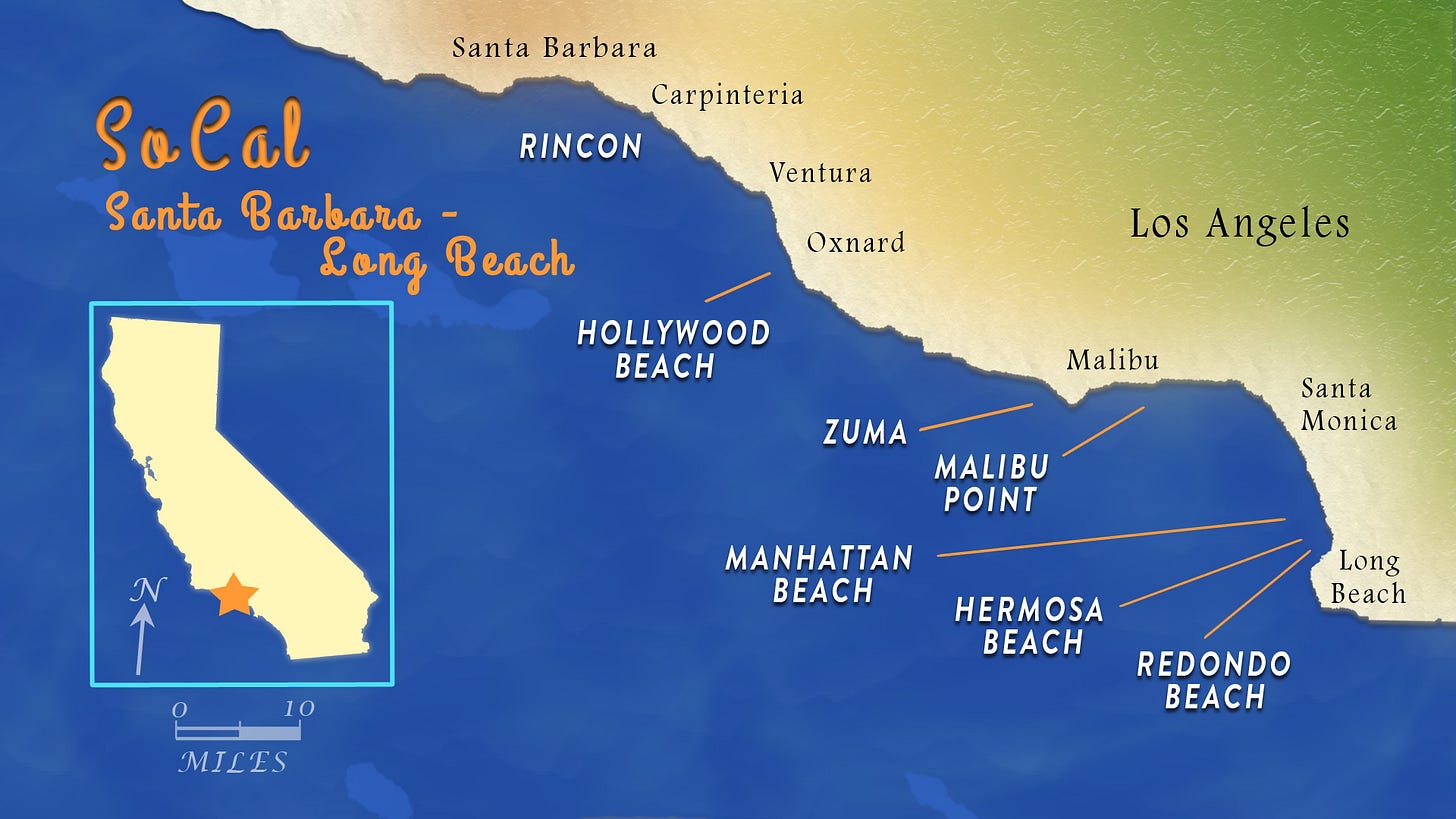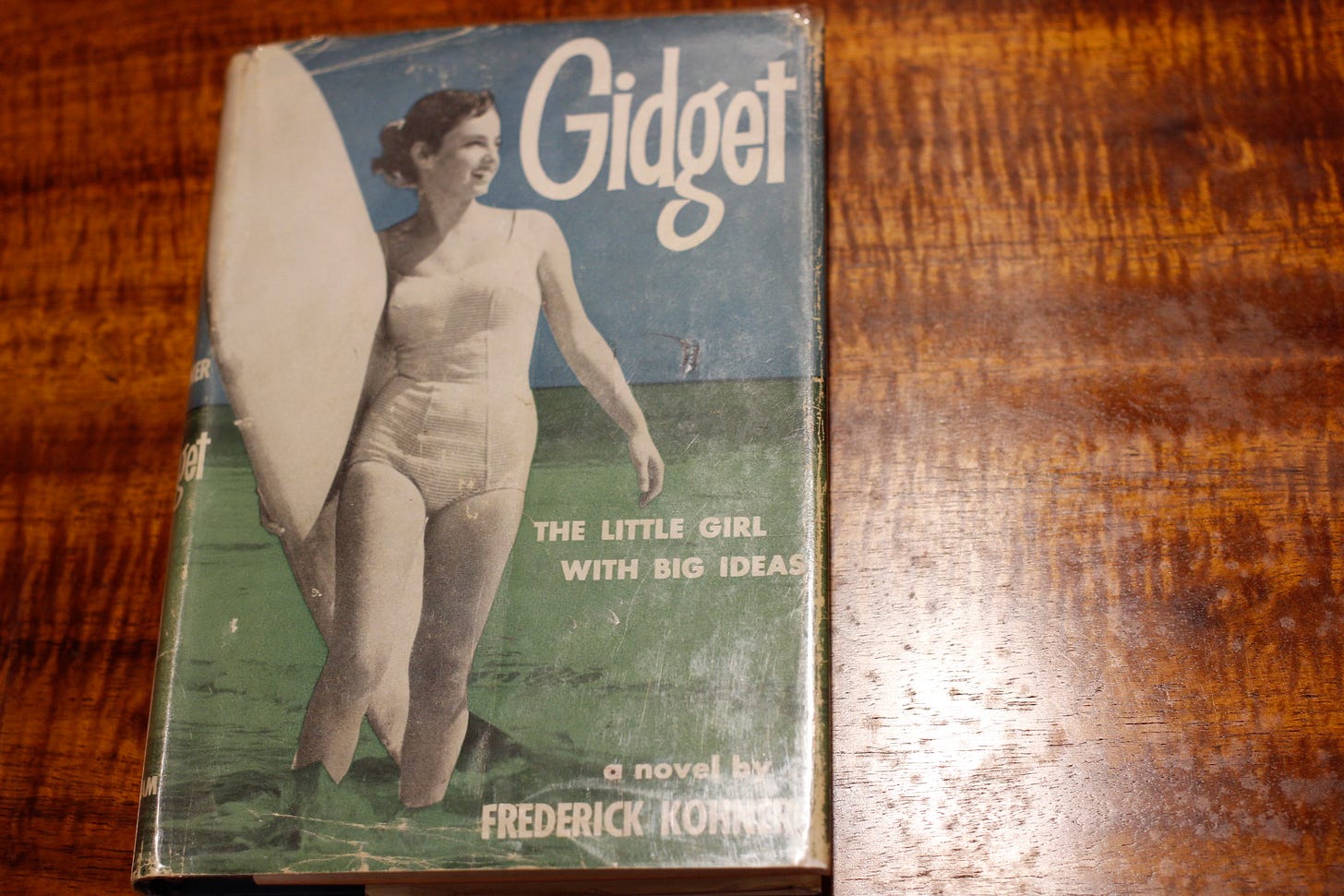Surfing Malibu in the 50's
The Malibu surfing community in the 1950s played a significant role in the history and popularization of modern surfing. Malibu, located along the coast of Southern California, became a focal point for surfers during this era, contributing to the growth of the sport and shaping its culture.
Paul Strauch Jr told me a funny story one afternoon. When he graduated from High School his parents asked him what he wanted for a present and he said an airplane ticket to Southern California so he could surf there. He was staying with Kenny Tilton and about five other Hawaiians in a house on the Strand in Huntington Beach. They didn’t have a door, just beads over the entrance.
One day, he and Kenny got a ride up to Malibu to surf. It was so territorial at the time, another surfer cut into Paul’s wave and sliced his leg up pretty good. He went back to Huntington and was taking a shower cleaning up the wound when somebody showed up at the beads and asked for him. Paul wrapped a towel around himself and went to the door. This rather large gentleman asked Paul for the details of the event, and told him he’d pick him up in the morning to ride up to Malibu to sort this out. I’ll leave the rest of the story to your imagination but the end result was an apology and a promise to never do that again. Such was Malibu in the 1950’s.
The Malibu surfing community in the 1950s laid the foundation for the global surf culture that we recognize today. It was a time of innovation, camaraderie, and the establishment of surfing as a lifestyle that extended beyond the waves and into popular culture. It was also a time of localism as surfing became more popular.
There were huge changes on the way for surfing. The boards were going from heavy wooden redwood boards, to lighter weight balsa, and then to foam. The process for working with the large cell foam airplane component was turned into what is now the modern surfboard. The lighter weight of foam allowed women to become more active and prevalent in the water.
When this film and the research for it began, it seemed to me that a lot of the roads to the commercial explosion were directly a result of the book Gidget by Frederick Kohner. I asked all the surfers and shapers I interviewed if they thought Gidget was a force in surfing. I got a lot of divergent answers. As I got deeper into the film, I thought an interview with the real Gidget would be pretty interesting, I wasn’t wrong.
I had never even considered trying to find her, let alone ask her for an interview. I checked with one of my research resources, SHACC, and they shared her contact with me. Kathy was delightful on the phone. We set a time and she gave me her address (which seemed familiar some how). The day came and I headed for her house, driving down the canyons near the beach. I turned on her street… the very street my wife and I had lived on years ago. Across the street from her home was the bench we used to sit on at night to enjoy a glass of wine at the edge of the canyon. Connections.
Kathy greeted me warmly and proceeded to captivate me for the next hour. Several times I had to pinch myself when I realized who I was talking to. You can see the full interview here, I hope you enjoy it as much as I did.
Malibu was full of so many personalities and stories that made surfing what it is today
I’d like to thank you all for reading Wood Water and Soul. We’d like to announce we have moved Addicted to Joy to a new streaming service, and now when you rent or buy Addicted to Joy you also get full length interviews with Paul Strauch Jr., Patti Paniccia, and Kathy Kohner. This is great for holiday entertainment, please share it with a friend. All the best for the holidays, see you in 2024.






